7 Stunning Chunri Drape Styles on Saree to Shine This Hartalika Teej
- Ruchi Kumari
- August 26, 2025
- 5:45 pm

Hartalika Teej is one of the most loved festivals for married and unmarried women across India, celebrated with devotion, fasting, and joy. It honors the union of Goddess Parvati and Lord Shiva and symbolizes marital harmony and love. Women wear attractive outfits on this day, adorn themselves with traditional jewelry, and most importantly, drape themselves in beautiful saris with chunri.
The chunri—often in red, maroon, or green with golden prints—has a sacred and traditional significance. It symbolizes devotion, prosperity, and grace. Wearing a saree paired with a Chunri enhances the festive look and reflects cultural pride. If you are preparing for Hartalika Teej and want to look both traditional and stylish, experimenting with different ways of wearing the chunri can make a huge difference.
Here are 7 stunning Chunri drape styles on sarees to help you shine this Teej.
1. Classic Nivi Drape with chunri
The Nivi drape, originating from Andhra Pradesh, is the most common and versatile way of wearing a saree. For Teej, pairing it with a Chunri makes it look regal yet effortless.
How to style: Drape your saree in the regular Nivi style with neatly pinned pleats at the front. Place the Chunri over your head like a veil and let it flow over one shoulder.
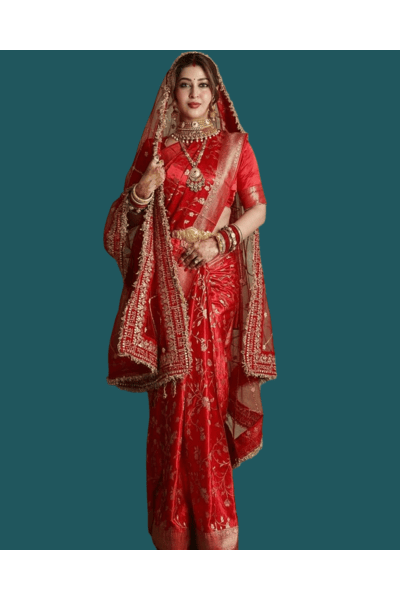
- Why it works: The veil effect adds a divine touch, ideal for prayers and rituals.
-
Best suited for: Women who prefer a graceful, classic look without overcomplication.
2. Gujarati Style Chunri Drape
The Gujarati drape is instantly recognizable because the pallu comes from the back to the front, showcasing its embroidery and prints beautifully.
How to style: Drape the saree Gujarati-style, with the pallu brought to the front over the right shoulder. Use the Chunri as an additional dupatta, covering your head and cascading down.
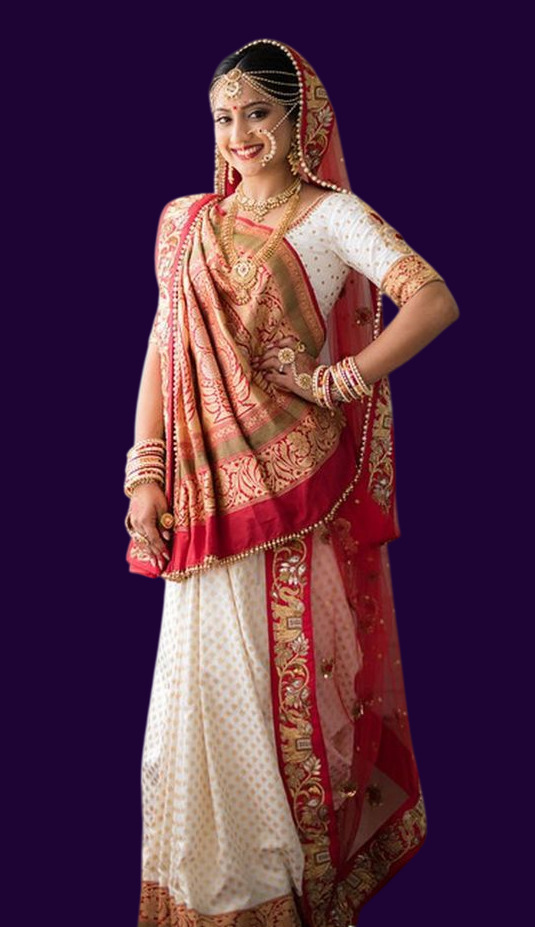
-
Why it works: This style displays the Chunri’s intricate designs and makes your look stand out in Hartalika Teej.
-
Best suited for: Festive gatherings where you want to highlight both your saree and Chunri equally.
3. Lehenga Style Saree with Chunri Pallu on Hartalika Teej
Lehenga-style sarees are perfect on Hartalika Teej if you want to mix modern styling with traditional attire. With a Chunri pallu, it creates a royal Teej-ready outfit.
How to style: Tuck and pleat the saree around the waist in lehenga form. Keep the pallu pleated neatly and style the Chunri as a dupatta over your head, pinned gracefully to one side.
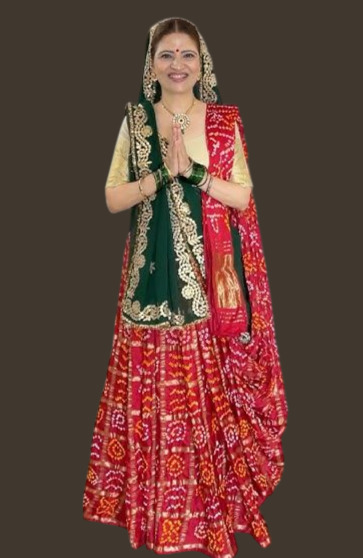
Why it works: It creates a voluminous, festive appearance while keeping you comfortable during the day-long rituals.
Best suited for: Younger women or anyone wanting to experiment with a contemporary yet traditional look.
4. Bengali Inspired Chunri Drape
The Bengali drape is dramatic and striking, making it a great choice for women who love a bold festive statement.
How to style: Drape the saree in the Bengali way, with two wide pleats for the pallu. Pin the Chunri at the shoulder, letting it fall loosely over your arm, or place it over your head for a cultural look.
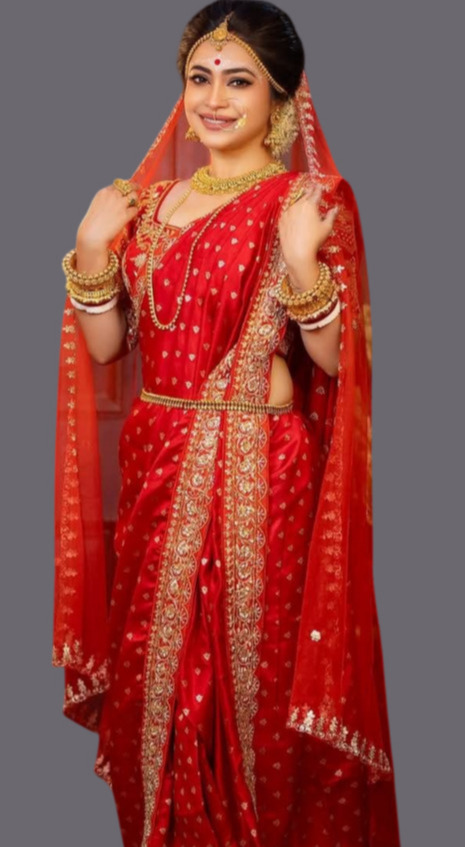
Why it works: It highlights boldness while keeping the Chunri’s essence intact.
Best suited for: Those who enjoy standing out and embracing deep cultural roots.
5. Front Pallu Drape with Chunri
A front pallu style blends the simplicity of traditional wear with a contemporary vibe, making it perfect for Teej celebrations with friends and family.
How to style: Instead of letting the pallu flow at the back, drape it across the chest. Place the Chunri like a dupatta or head covering, styled in layers.
Why it works: It allows both your saree and Chunri to be seen clearly, adding to the visual appeal.
Best suited for: Modern women who prefer a balance of fashion and tradition.
6. Double Drape Saree with Chunri Dupatta
For those who want to make heads turn, a double drape style with a Chunri is the perfect option.
How to style: Drape your saree in the regular Nivi way. Add the Chunri separately like a second pallu or dupatta—either pinned across the other shoulder or covering the head.
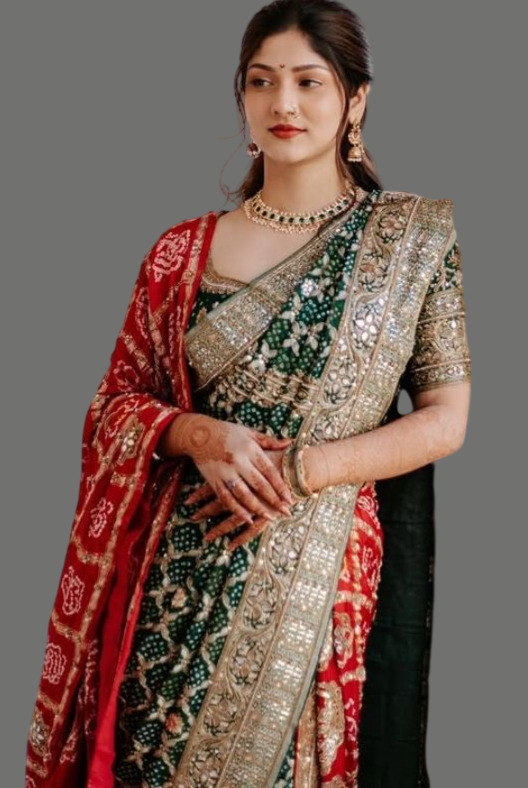
Why it works: The dual drape gives you a queen-like aura and ensures the Chunri remains the centerpiece.
Best suited for: Women attending grand Teej celebrations where they want to look unique and glamorous.
7. Half-Saree Inspired Drape with Chunri
Inspired by South Indian half-saree styling, this look combines the charm of a lehenga, dupatta, and saree together.
How to style: Drape the saree around your waist like a skirt, leaving out the pallu. Use the Chunri as the draped dupatta across the torso or over the head.
Why it works: It looks playful yet elegant and is easier to carry during rituals and dance.
Best suited for: Younger women who want a stylish, lightweight festive outfit.
Finishing Touches for Your Teej Look
No festive look is complete without the right accessories. Once you’ve chosen your drape, enhance your appearance with these styling tips:
-
Bangles & Glass Choodiyan: Add a colorful set of bangles to enhance the festive vibe.
-
Sindoor & Bindi: Essential symbols for Teej, completing the divine look.
-
Floral Touch: Gajra or fresh flowers in your hair bring freshness and charm.
-
Jewelry: Statement jhumkas, chokers, or a waist belt (kamarbandh) highlight the drape beautifully.
-
Footwear: Opt for embellished juttis or sandals that match your saree.
This Hartalika Teej, let your saree and Chunri speak of elegance, devotion, and style. With these draping ideas, you can honor traditions while embracing your personal fashion statement. Shine bright, stay graceful, and celebrate the festival with joy.
